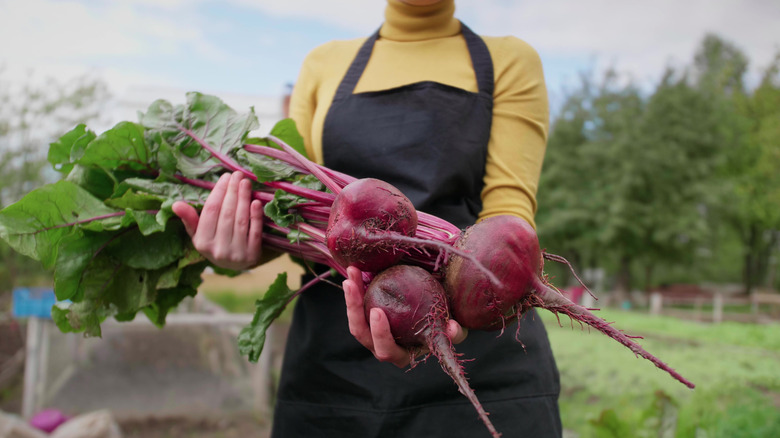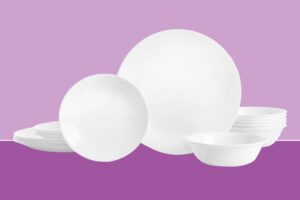
Ekateryna Zubal/Shutterstock
Underrated. Underappreciated. Underused. That’s what you might call any nutrient-rich veggie that typically ends up in the trash instead of on your plate.
Think you’d never toss out a nutritious food? Think again. Data from the U.S. Department of Agriculture suggests that up to 40% of all food is wasted. You can do your part to stop the wastage by using an often discarded vegetable packed with iron that can also help fight hypertension: beet greens.
Beet greens are the green leaves that sprout from the top of a beet. Their proximity to the “main star” (the beet) makes them easy to overlook as an ingredient in their own right. However, you might want to give them a chance if you’re trying to improve your cardiovascular system health.
As mentioned, beet greens are filled with iron. In just one cup, you get nearly one milligram of the essential mineral. That might not seem like a lot, but it’s about three times the iron in a similar serving of fresh kale and approximately nine times that of uncooked collard greens. Leafy greens, in general, are must-consider foods if you’re low on iron. This makes beet greens a terrific option if you want to boost your iron by eating plants, which is realistically doable.
Iron benefits for body and heart

Westend61/Getty Images
What’s the benefit of keeping your iron at normal levels? Iron helps keep oxygen moving throughout your body, which enables you to have the energy to power through your days.
If you don’t routinely get the daily recommended adult value of iron (anywhere from 8 milligrams to 18 milligrams, depending on your gender (via National Institutes of Health), you could end up experiencing the telltale signs of iron deficiency. These include shortness of breath, dizziness, headaches, and fatigue. And if you remain in a state of anemia (insufficient iron), you could have irregular heartbeats — when your heart skips beats — or life-threatening heart problems.
Eating more beet greens, along with other iron-filled foods, can help you bypass the mild and serious symptoms of anemia. Plus, you’ll be taking measures to naturally bring down your blood pressure. After all, beet greens contain at least two nutrients that have been associated with decreased blood pressure: potassium and fiber (762 milligrams and 3.7 grams, respectively).
Potassium and fiber for anti-hypertensive effects

VN_KK/Shutterstock
A primary role of potassium is to shift unnecessary sodium out of the body, thereby lowering the pumping pressure of your blood against the walls of your arteries, veins, and capillaries. And that’s good for reducing your chances of heart disease. According to a 2024 review from Hypertension, an uptick in potassium consumption led to a 24% drop in relative stroke risk.
Fiber is equally as essential if you’re trying to bring down blood pressure with food. Increasing your fiber by just 5 grams every day can nudge down both your systolic and diastolic blood pressure numbers, as noted by a 2024 article in Hypertension. (For perspective, 5 grams is available in approximately 1½ cups of beet greens.)
Interestingly, beet greens aren’t the only part of the beet that helps your “beat” stay strong. Beetroot juice is also one of those underrated heart-friendly ingredients. Case in point, a 2017 review from Advances in Nutrition found that across 22 studies, participants who drank beetroot juice exhibited lower blood pressure than those who did not. That means you could get a double dose of cardiovascular assistance if you drink beetroot juice while enjoying a recipe featuring beet greens.
New to cooking with beet greens? For kitchen inspiration, try this clever seasonal condiment that pairs cranberries and beet tops.
Credit: healthdigest.com






